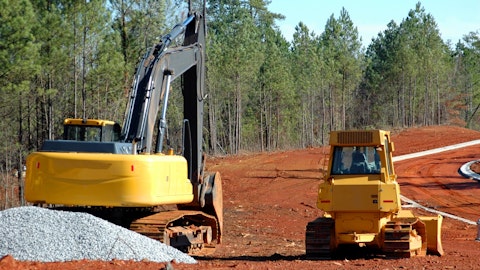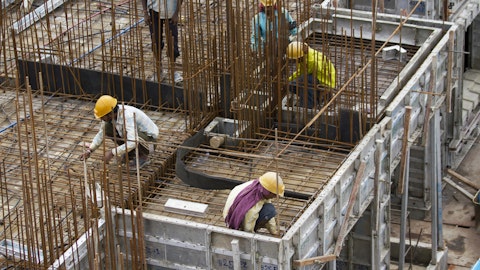The difference is now we’ve caught up with it. So, I think those are important takeaways. Here’s another important takeaway, Kathryn, there are two others. Number one, we have moved the vast majority of our customers to January 1 from a price increase. As you may recall from years past, it was somewhat bifurcated, somewhere in January, somewhere in April, the vast majority now are in January. Number two, we indicated to our customers with our price increase letters coming into the new year that we were reserving our rights to come back and have a conversation relative to mid-year price increases as well. We will obviously talk more about that as we get closer to midyear, but here’s some important takeaway. The pricing guidance that we have from 13% to 15%, obviously with the midpoint 14%, it does not have in it right now any midyear price increases.
So to the extent that we see those during the course of the year, that would obviously trend to the upside on pricing. So, Kathryn, thank you for the question. I hope that’s broadly responsive.
Operator: Thank you. Our next question comes from the line of Trey Grooms with Stephens. Your line is now open.
Trey Grooms: Good morning, Ward and Jim. So thanks for the color in the deck. That was very helpful. But, Ward, I was hoping you could dive in a little deeper on your end market expectations, maybe a little more granularity around what is baked into your flat aggregates volume guide for aggregates shipments this year going through each of your end markets and kind of how you get there?
Ward Nye: Happy to, Trey. Thank you for that. So several things. One, if we look at what we believe will be our largest end use in the year, that’s going to be infrastructure. We think that’s up mid-single digits to high single digits for a number of reasons. One, we outlined at the prepared comments, we have very healthy state DOTs, number one. Number two, if we’re looking at highway contract awards, they’re up 24% to $80 billion, that’s a record number. I mentioned that the Cornyn-Padilla Act that went in really not that long ago is going to add $40 billion just to Martin Marietta top 10 states. That’s a big number. We think states will put that money to use. The other thing that I thought was notable as we look at the ballot initiatives from late last year passed at a rate of almost 90%, but importantly, that adds another $23 billion.
So when we’re looking at already healthy state DOTs, we’re looking at Cornyn-Padilla, we’re looking at the new long-term highway bill, state initiatives. That’s a pretty powerful mix for us, and again, much of what’s driving our resilience in that is where. So again, if you go back and look at the states that are so key to us, the Texas, Colorado, North Carolina, Georgia, Florida, California Republic. These states are all in a very good position relative to public infrastructure going forward. As we look at non-res, we see two somewhat different stories in non-res. We think non-res is broadly going to be flat. And here’s how we get there. We think large projects of scale, whether it’s manufacturing, energy or others and again I think you go back to those states that I was referring you to a minute ago.



